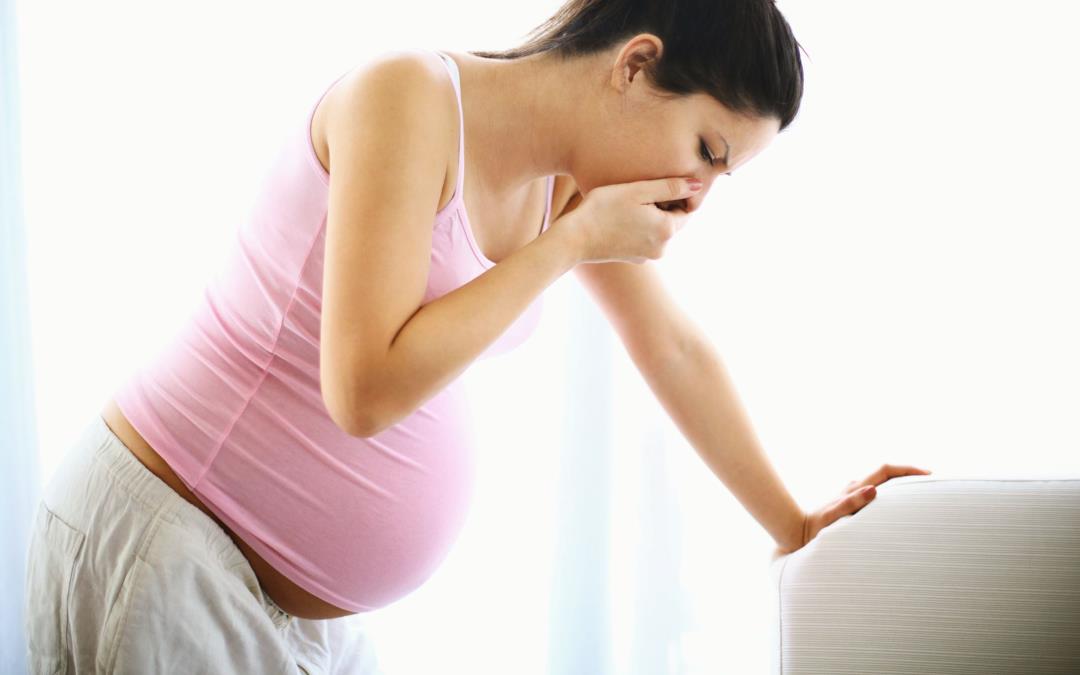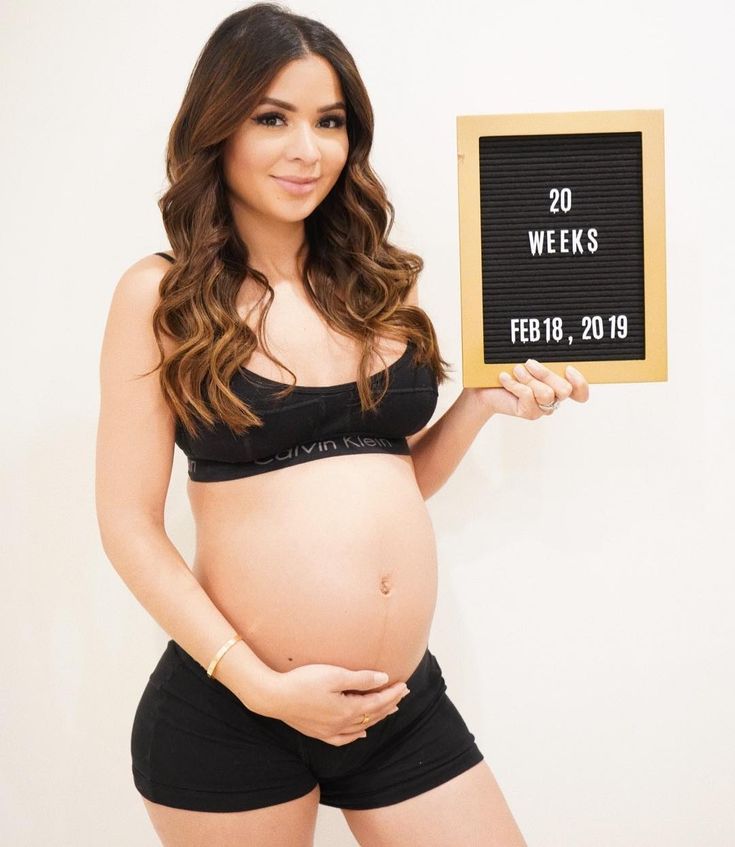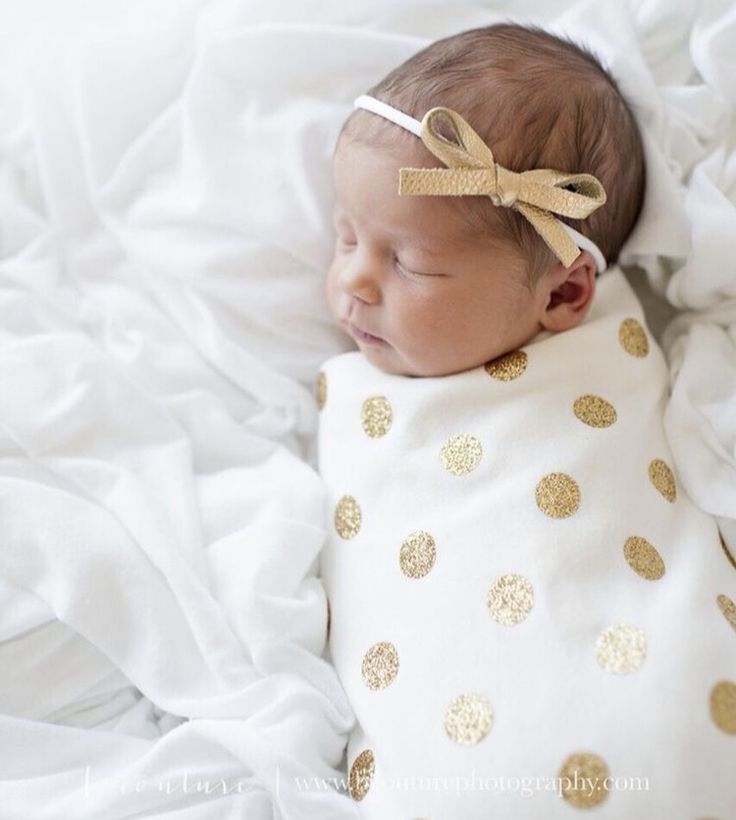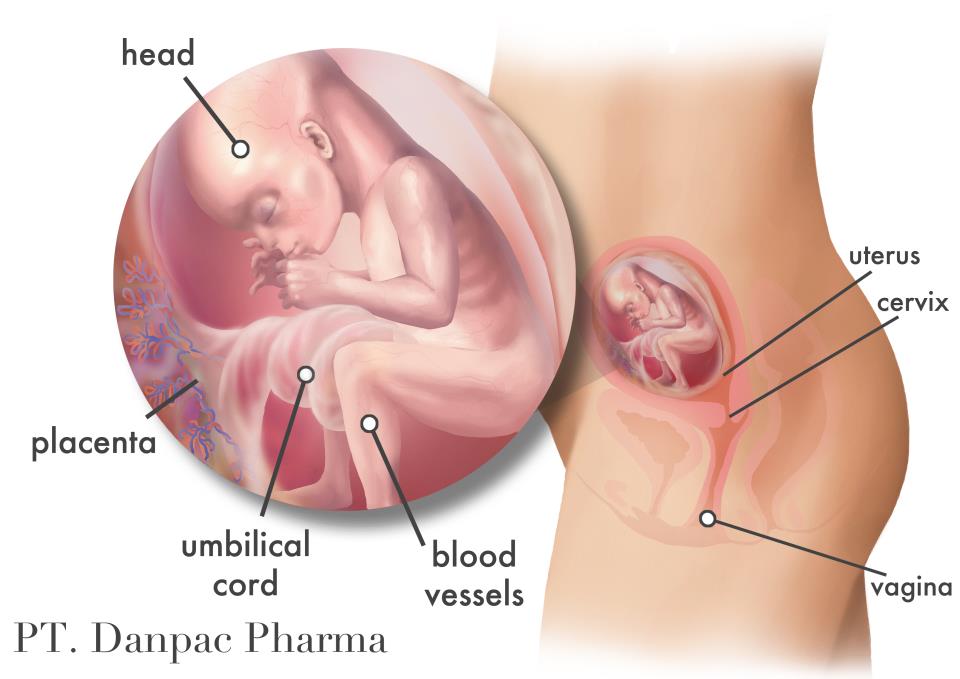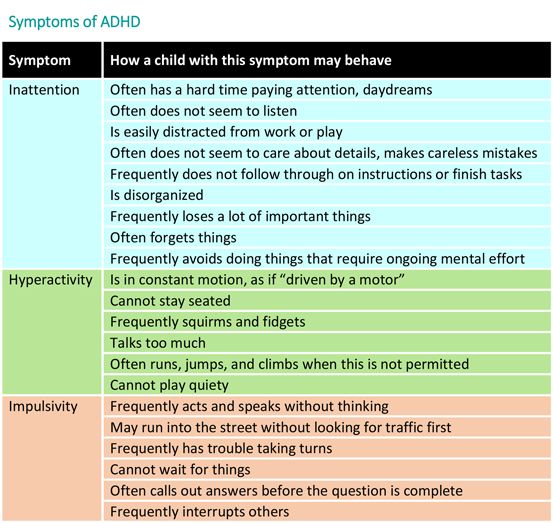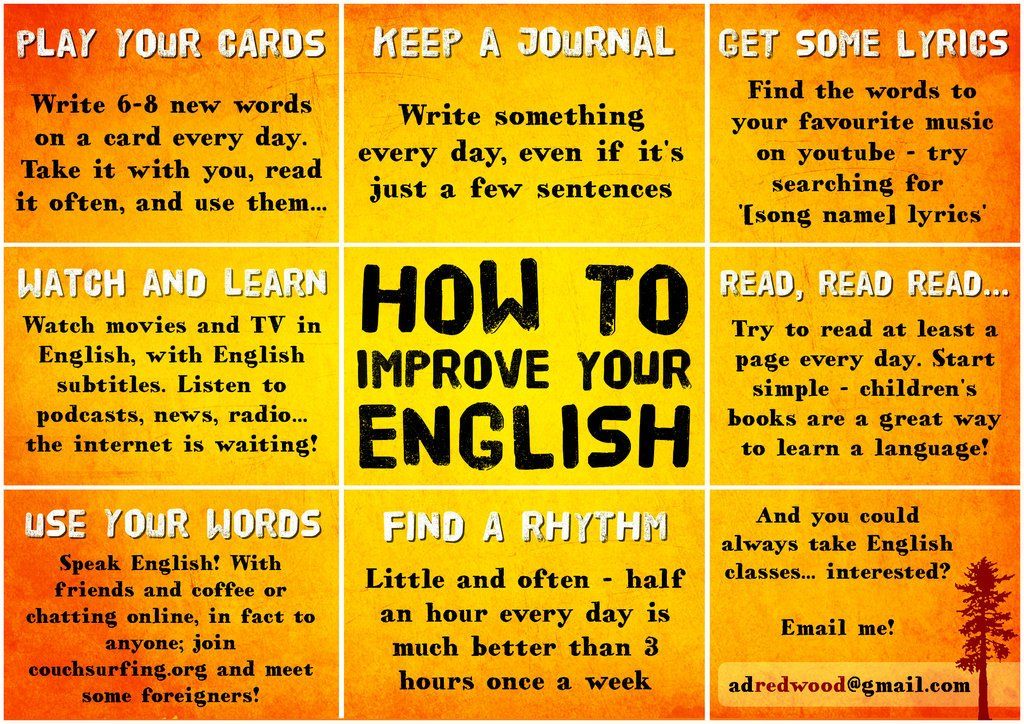Baby safety in cars
Car Seat Safety (for Parents)
Why Are Car Seats Important?
Using a car seat, also called a child safety seat, is the best way to protect your kids when they're in a car. Car crashes are one of the leading causes of death and injury for children. Because car seats save lives, using a car seat is the law in every U.S. state.
But keeping your child safe depends on choosing the right safety seat and using it correctly. The best car seat is the one that fits your child's weight, size, and age, as well as your vehicle.
Here are some things to know so you can pick a seat that's right for your child:
- Choose a seat that meets or exceeds Federal Motor Vehicle Safety Standard 213. The seat's label will say so.
- Learn how to install the seat and use the harness before your child's first ride. Don't depend on store displays to show you how to do it.
- To get help or to double-check that you've installed it properly, visit a child car seat inspection station, set up by the federal government across the country.
You can also get help from many local health departments, public safety groups, hospitals, law enforcement agencies, and fire departments. Be sure to ask for a certified child passenger safety technician.
- Be careful about using a secondhand car seat:
- If you know a seat was in a crash, don't use it. It may be damaged in ways you can't see.
- Don't use a seat that is missing parts or lacks a manufacture date and model number. If there's no instruction manual available, don't use the seat. Also, check the seat for the recommended "expiration date."
- If you have any doubts about a seat's history, or if it has cracks or other signs of wear and tear, don't use it. Car seat recalls are common. Contact the manufacturer and ask how long the seat can safely be used. If a seat has been recalled, the manufacturer might provide a replacement part or new model.
- Be sure to fill out the product registration card so you hear about recalls right away.
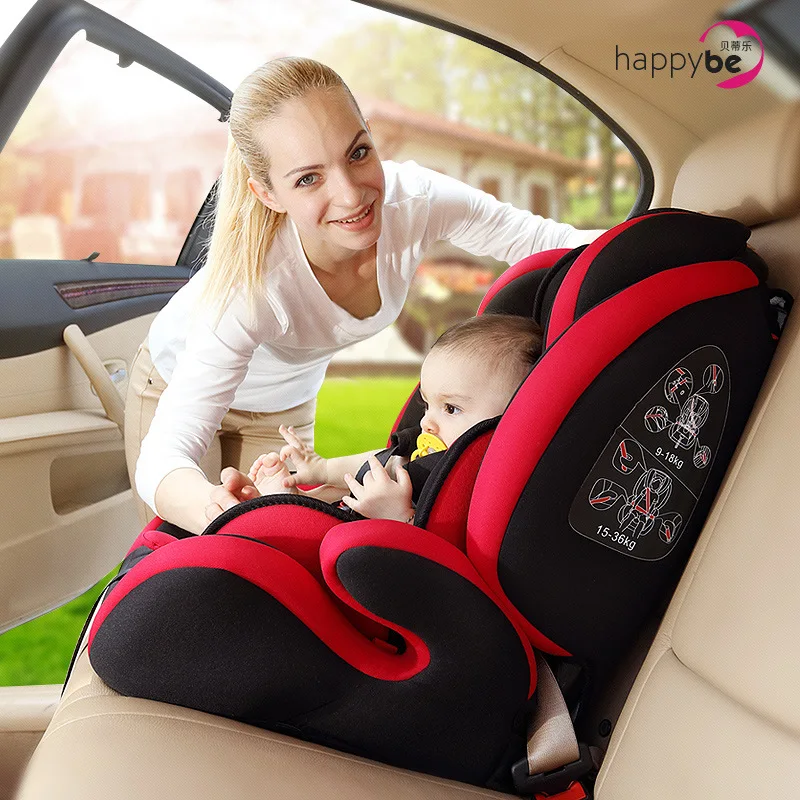
Babies start out in infant-only (rear-facing) seats or convertible seats. As they grow, kids switch to forward-facing seats before moving to a booster seat. Here's a rundown of which seat to use when.
What Are the Types of Car Seats?
Infant-Only Seats (Birth to 22-35 Pounds)
Infant-only seats fit newborns and smaller infants best. You'll need to buy another seat when your baby outgrows it. Infant-only seats are designed to protect babies from birth until they reach up to 35 pounds (about 16 kilograms), depending on the model.
Infant car seats should always be installed to face the rear of the car. A small child is much less likely to die or be seriously injured when in a rear-facing seat. That's because the back of the safety seat will cradle the baby's head, neck, and torso in a crash. At this age, a child's neck usually isn't strong enough to support the head in a crash.
The American Academy of Pediatrics (AAP) recommends that infants and toddlers ride in a rear-facing seat until they reach the highest weight and height limits recommended by the seat's manufacturer.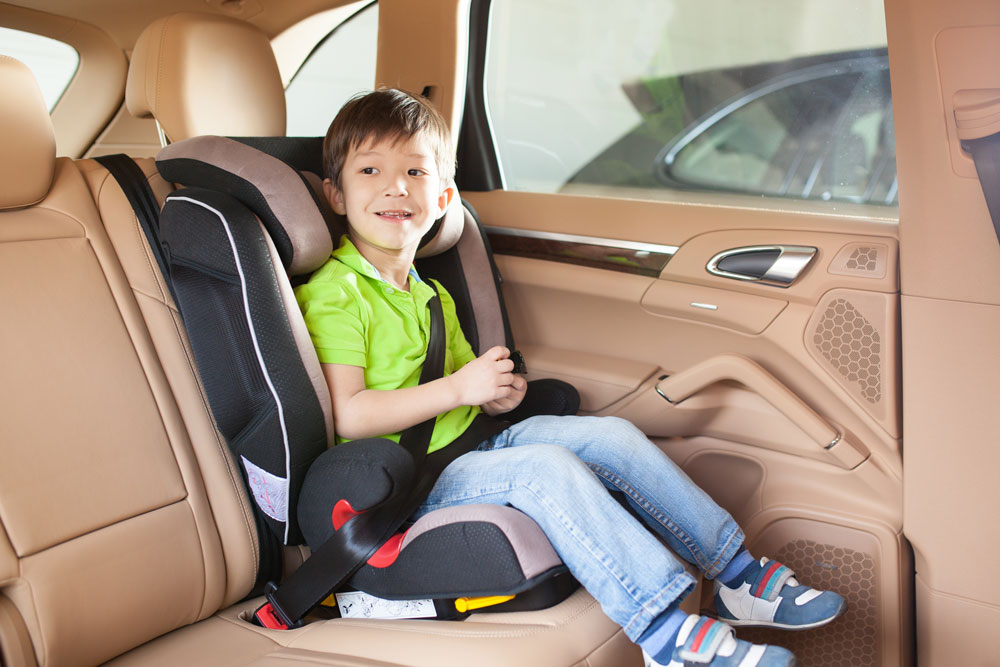 Safety experts say to do this based on a child's size, not age. Small children can stay rear-facing until age 3 or 4.
Safety experts say to do this based on a child's size, not age. Small children can stay rear-facing until age 3 or 4.
Infant-only safety seats are convenient because they're designed to double as carriers, chairs, or rockers when not used in the car. Many models detach right from the base, letting you leave the base installed in the car. Some can be clicked into strollers to be wheeled around. If your baby is in the infant safety seat outside of the car, never put the seat on a high surface like a kitchen counter, a dresser, or changing.
Infant-seats are easy to use, but don't let your baby spend too much time in one at home or at daycare. Too much time in a car seat can limit a baby's movement and opportunities for stimulation, which are important for developing sensory and motor skills.
Should I Use a Convertible Seat?
Convertible seats are designed to protect kids:
- from birth up to at least 40 pounds (18 kilograms) facing backward
- up to 65 pounds (30 kilograms) or even 80 pounds (36 kilograms) facing forward, depending on the model
Convertible seats are placed in different positions depending on a child's age and size:
- They face toward the rear until a baby is ready to face forward (has reached the rear-facing weight or height limit for that seat).
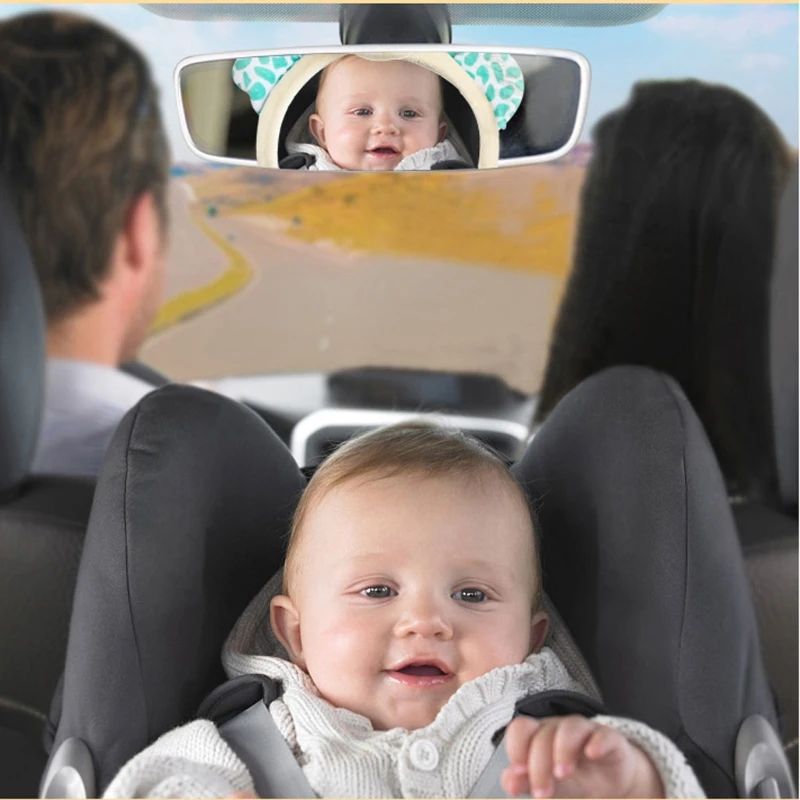
- Then, they can be turned around and "converted" to a forward-facing seat.
Some car seats are known as "all-in-one" or "3-in-one" because they convert from rear-facing to front-facing to booster with the harness removed.
Convertible seats:
- are heavy and not very portable
- should be used only for travel (not outside the car)
- can be economical because you might not need to buy a separate infant-only seat
- are a good option for larger babies who outgrow their infant-only seat and still need to be rear-facing
If you use a convertible seat:
- Make sure it fits your child correctly. A small child in a large seat may not be the best option.
- Don't use a model with a tray shield for newborns. The shield comes up too high on them. In a crash, the baby's face could hit the tray.
Forward-Facing-Only Seats (20-80 pounds)
Forward-facing car seats are designed to protect children from 20 to 80 pounds (about 10 to 36 kilograms) or more, depending on the model.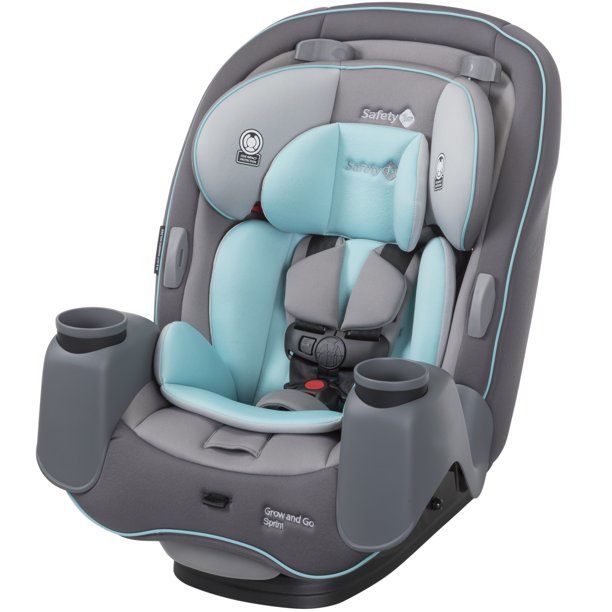
All kids who have outgrown the rear-facing height or weight limit for their car seat should use a forward-facing car seat with a full harness for as long as possible. They should only switch to a booster seat that relies on the car's adult seat belts when they pass the height and weight limit for their forward-facing car seat.
Some cars have built-in or integrated car seats. As with other forward-facing car safety seats, built-in seats are for kids who have outgrown their rear-facing car seat. Some convert to belt-positioning booster seats. Weight and height limits will vary, so check your owner's manual.
What About Air Bags?
When combined with safety belts, air bags protect adults and teens from serious injury during a collision. They have saved lives and prevented many serious injuries. But young children can be injured or even killed if they are riding in the front passenger seat when an air bag opens.
Air bags were designed with adults in mind. They must open with great force (up to 200 miles per hour) to protect an average-sized, 165-pound (75-kilogram) male from injury.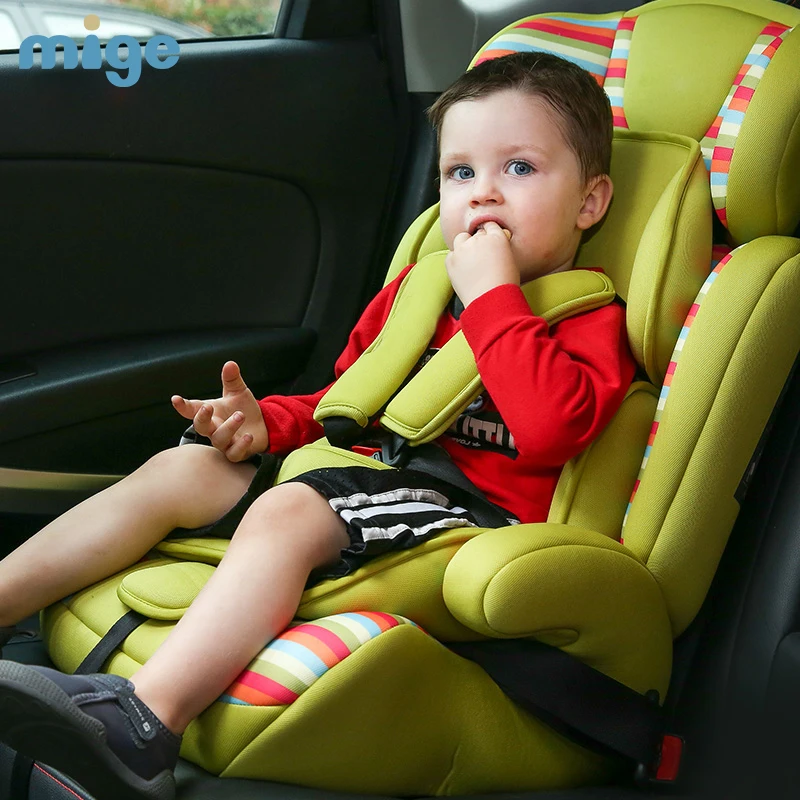 While this force is OK for adults and bigger kids, it can be dangerous for small kids, possibly leading to head and neck injuries.
While this force is OK for adults and bigger kids, it can be dangerous for small kids, possibly leading to head and neck injuries.
Protect your baby or toddler from air bag injury by following these rules:
- Never place a rear-facing infant seat in the front seat of a car that has a passenger-side air bag.
- Place child safety seats in the back seat.
- If you have no choice and must place a child in the front (that is, if your car is a two-seater or if the car seat will not fit in the back seat), push the passenger seat as far back as it will go.
- All kids under 13 years of age should always ride in the back seat, and in the middle of the back seat whenever possible. All passengers must have their seatbelts buckled.
- A law allows car makers to install a manual cut-off switch that temporarily disables a passenger-side air bag. As recommended by National Highway Traffic Safety Administration, if you must place a child in a booster seat in the front seat and your car has this cut-off switch, use it to disable the air bag for the entire ride.
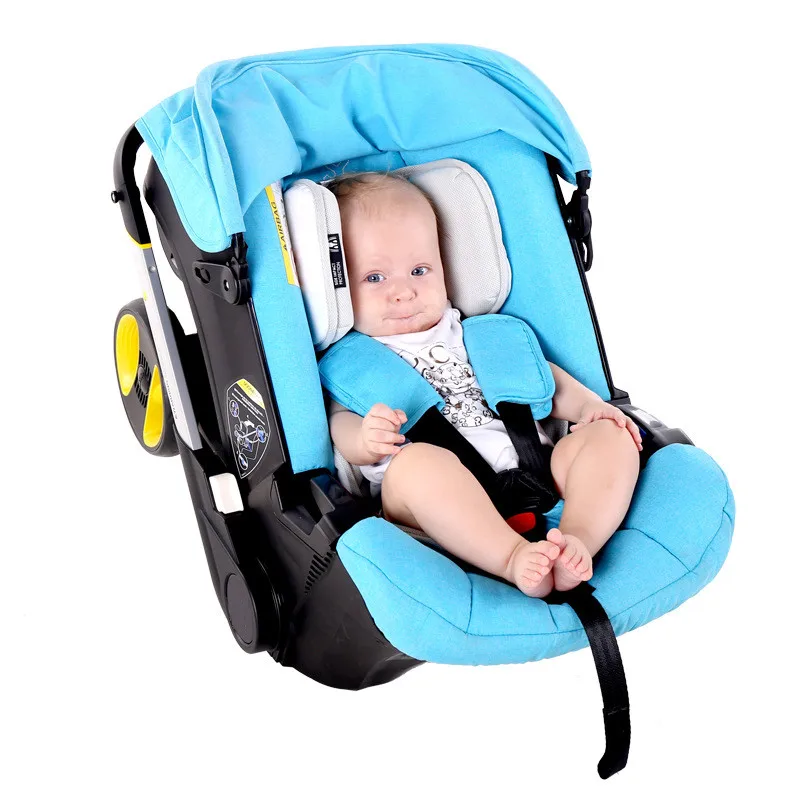 Be sure to switch the air bag back on when you remove the booster seat.
Be sure to switch the air bag back on when you remove the booster seat.
You can find more information about keeping kids safe in cars online at:
- National Highway Traffic Safety Administration
- Safe Kids Worldwide
Car Seats: Information for Families
One of the most important jobs you have as a parent is keeping your child safe when your child is riding in a vehicle.
Each year, thousands of young children are killed or injured in car crashes. Proper use of car safety seats helps keep children safe. But, because so many different seats are on the market, many parents find this overwhelming. If you are expectant parents, consider working with a certified passenger safety technician (CPST or CPS technician), before your baby is born, to ensure a safe ride home from the hospital.
The type of seat your child needs depends on several things, including your child's age, size, and developmental needs. Here is more information from the American Academy of Pediatrics (AAP) about choosing the most appropriate car safety seat for your child.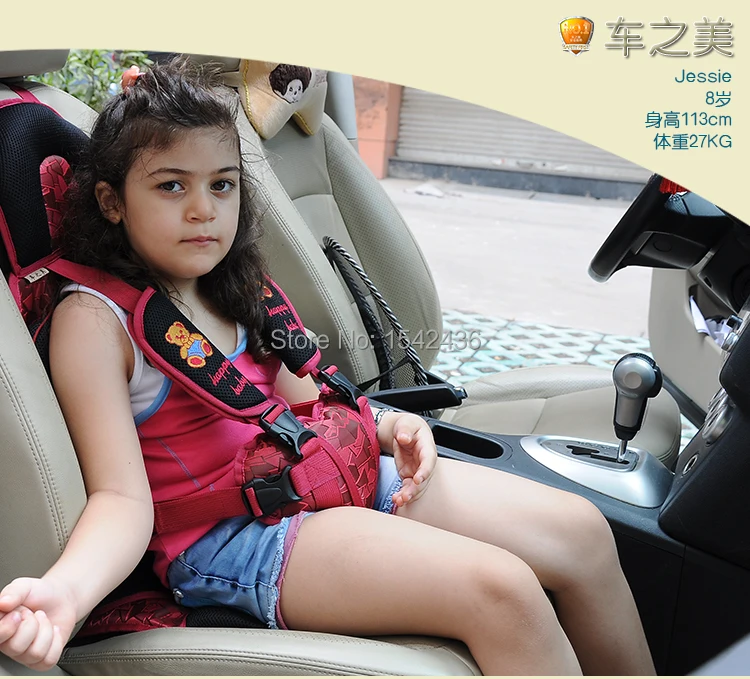
Visit here for a listing of car seats & car seat manufacturers.
Types of car seats at a glance:
This chart is a quick guide on where to start your search. It's important to continue your research to learn about each seat you use.
Age-group | Type of Seat | General Guidelines | ||
|---|---|---|---|---|
Infants and toddlers | All infants and toddlers should ride in a rear-facing seat until they reach the highest weight or height allowed by their car safety seat manufacturer. Most convertible seats have limits that will allow children to ride rear facing for 2 years or more. | |||
Toddlers and preschoolers | Children who have outgrown the rear-facing weight or height limit for their convertible seat should use a forward-facing seat with a harness for as long as possible, up to the highest weight or height allowed by their car safety seat manufacturer. | |||
School-aged children |
| All children whose weight or height exceeds the forward-facing limit for their car safety seat should use a belt-positioning booster seat until the vehicle seat belt fits properly, typically when they have reached 4 feet 9 inches in height and are 8 to 12 years of age. All children younger than 13 years should ride in the back seat. | ||
Older children |
| When children are old enough and large enough for the vehicle seat belt to fit them correctly, they should always use lap and shoulder seat belts for the best protection. All children younger than 13 years should ride in the back seat. | ||
Car safety seats may be installed with either the vehicle's seat belt or its LATCH (lower anchors and tethers for children) system. LATCH is an attachment system for car safety seats. Lower anchors can be used instead of the seat belt to install the seat, and many parents find them easier to use in some cars. The top tether should always be used with a forward-facing seat, whether you use the seat belt or lower anchors to secure it. The seat belt and LATCH systems are equally safe, so caregivers should use one or the other, whichever works best for them, for their car safety seat, and their vehicle. In general, caregivers should only use 1 of the 2 options unless the car safety seat and vehicle manufacturers say it is OK to use 2 systems at the same time.
LATCH is an attachment system for car safety seats. Lower anchors can be used instead of the seat belt to install the seat, and many parents find them easier to use in some cars. The top tether should always be used with a forward-facing seat, whether you use the seat belt or lower anchors to secure it. The seat belt and LATCH systems are equally safe, so caregivers should use one or the other, whichever works best for them, for their car safety seat, and their vehicle. In general, caregivers should only use 1 of the 2 options unless the car safety seat and vehicle manufacturers say it is OK to use 2 systems at the same time.
Vehicles with the LATCH system have lower anchors located in the back seat, where the seat cushions meet. Tether anchors are located behind the seat, either on the panel behind the seat (in sedans) or on the back of the seat, ceiling, or floor (in most minivans, SUVs, hatchbacks, and pickup trucks). All forward-facing car safety seats have tethers or tether connectors that fasten to these anchors.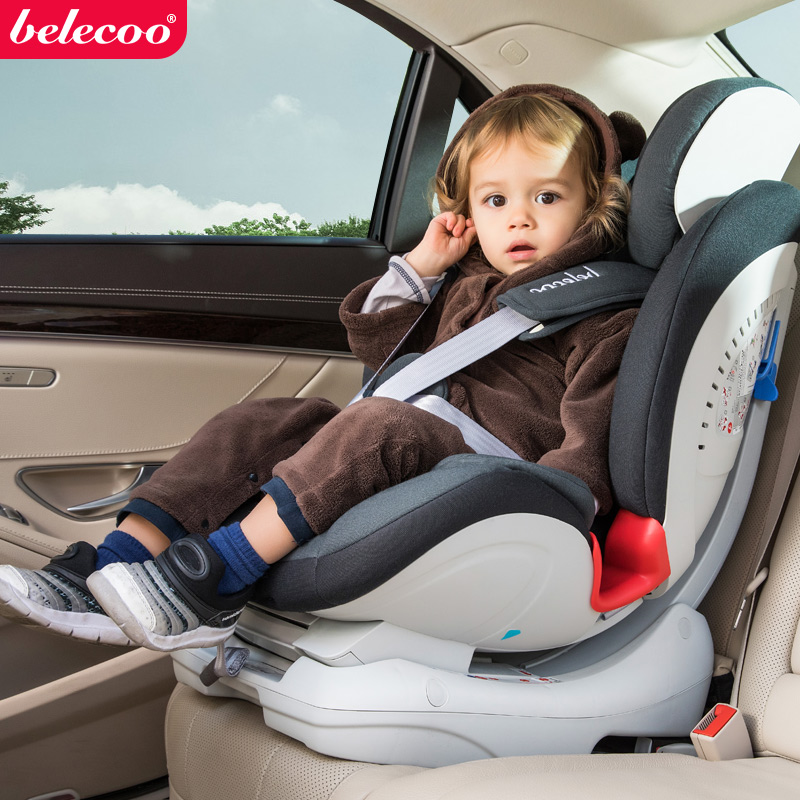 Nearly all passenger vehicles and all car safety seats made on or after September 1, 2002, are equipped to use LATCH. See vehicle owner's manual for highest weight of child allowed to use top tether.
Nearly all passenger vehicles and all car safety seats made on or after September 1, 2002, are equipped to use LATCH. See vehicle owner's manual for highest weight of child allowed to use top tether.
All lower anchors are rated for a maximum weight of 65 pounds (total weight includes car safety seat and child). Parents should check the car safety seat manufacturer's recommendations for maximum weight a child can be to use lower anchors. New car safety seats have the maximum weight printed on their label.
NOTE: Seat belts—If you install a car safety seat by using your vehicle's seat belt, you must make sure the seat belt locks to hold the seat tightly. In most newer cars, you can lock the seat belt by pulling it all the way out and then allowing it to retract to keep the seat belt tight around the car safety seat. In addition, many car safety seats have built-in lock-offs so you can lock the belt without having to lock the seat belt separately as well. Refer to the vehicle owner's manual for details about how your seat belt locks.
Refer to the vehicle owner's manual for details about how your seat belt locks.
Middle of the back seat—The safest place to ride for all children younger than 13 years is the back seat. If possible, it may be best for the child to ride in the middle of the back seat. However, it is sometimes difficult to install a car safety seat tightly in the middle if the vehicle seat is narrow or uneven. Also, many vehicles do not have lower anchors for the middle seating position. It is safest to put the car safety seat in a position where you can install it tightly with either the lower anchor system or the seat belt; in some cases, this position may be on either side of the back seat rather than in the middle. A child passenger safety technician (CPST or CPS technician) can help you decide which place is best to install your child's car safety seat in your vehicle.
The AAP recommends that all infants ride rear facing starting with their first ride home from the hospital.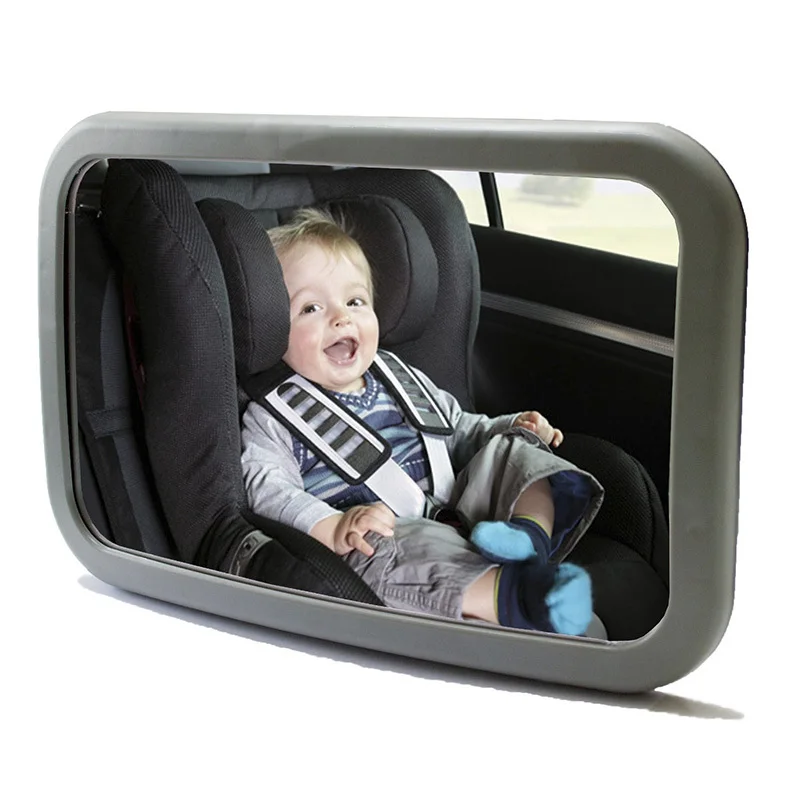 All infants and toddlers should ride in a rear-facing seat as long as possible until they reach the highest weight or height allowed by their car safety seat manufacturer. Most convertible seats have limits that will allow children to ride rear facing for 2 years or more. When infants outgrow their rear-facing–only seat, a convertible seat installed rear facing is needed. All parents can benefit from getting installation help from a CPST to ensure that their child's seat is properly installed.
All infants and toddlers should ride in a rear-facing seat as long as possible until they reach the highest weight or height allowed by their car safety seat manufacturer. Most convertible seats have limits that will allow children to ride rear facing for 2 years or more. When infants outgrow their rear-facing–only seat, a convertible seat installed rear facing is needed. All parents can benefit from getting installation help from a CPST to ensure that their child's seat is properly installed.
Types of rear-facing seats
Three types of rear-facing seats are available: rear-facing–only, convertible, and all-in-one. When children reach the highest weight or length allowed by the manufacturer of their rear-facing–only seat, they should continue to ride rear facing in a convertible or all-in-one seat.
Rear-facing–only seats
Are used for infants up to 22 to 35 pounds and 26 to 35 inches, depending on the model.
Are small and have carrying handles.

Usually come with a base that can be left in the car. The seat clicks into and out of the base so you don't have to install the seat each time you use it. Parents can buy more than one base for additional vehicles.
Should be used only for a child's travel (not sleeping, feeding, or any other use outside the vehicle).
Convertible seats (used rear facing)
Can be used rear facing and, later, "converted" to forward facing for older children when they outgrow either the weight limit or the length limit for rear facing. This means the seat can be used longer by your child. Convertible seats are bulkier than infant seats, however, and they do not come with carrying handles or separate bases and are designed to stay in the car.
Many have higher limits in rear-facing weight (up to 40–50 pounds) and height than those of rear-facing– only seats, a feature that makes convertible seats ideal for bigger babies and toddlers.
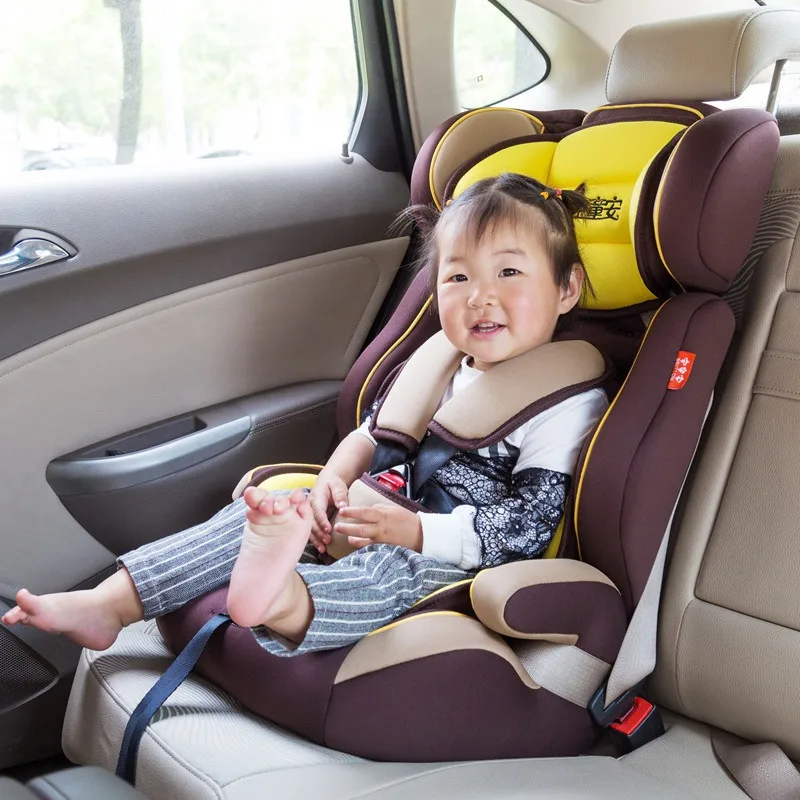
Have a 5-point harness that attaches at the shoulders, at the hips, and between the legs.
Should be used only for a child's travel (not sleeping, feeding, or any other use outside the vehicle).
All-in-one seats (used rear facing)
Can be used rear facing, forward facing, or as a belt- positioning booster. This means the seat may be used longer by your child as your child grows.
Are often bigger in size, so it is important to check that they fit in the vehicle while they are rear facing.
Do not have the convenience of a carrying handle or separate base; however, they may have higher limits in rear-facing weight (up to 40–50 pounds) and height than those of rear-facing–only seats, a feature that makes all-in-one seats ideal for bigger babies and toddlers.
Installation tips for rear-facing seats
Always read the vehicle owner's manual and the car safety seat manual before installing the seat.
When using a rear-facing seat, keep the following tips in mind:
Place the harnesses in your rear-facing seat in slots that are at or below your child's shoulders.
Ensure that the harness is snug (you cannot pinch any slack between your fingers when testing the harness straps over the child's shoulders) and that the chest clip is placed at the center of the chest, even with your child's armpits.
Make sure the car safety seat is installed tightly in the vehicle with either lower anchors or a locked seat belt. Many car safety seats have an integrated lock-off system to keep the seat belt locked. If your seat has one, follow the manufacturer's recommendations on how to use it. If you can move the seat at the belt path more than an inch side to side or front to back, it's not tight enough.
Never place a rear-facing seat in the front seat of a vehicle that has an active front passenger airbag. If the airbag inflates, it will hit the back of the car safety seat, right against your child's head, and could cause serious injury or death.

If you are using a convertible or all-in-one seat in the rear-facing position, make sure the seat belt or lower anchor webbing is routed through the correct belt path. Check the instructions that came with the car safety seat to be sure.
Make sure the seat is at the correct angle so your child's head does not flop forward. Check the instructions to find out the correct angle for your seat and how to adjust the angle if needed. All rear-facing seats have built-in recline indicators.
Check the car safety seat instructions and vehicle owner's manual about whether the car safety seat may contact the back of the vehicle seat in front of it.
Still having trouble? Check with a certified CPST in your area who can help.
Common questions
What if my child's feet touch the back of the vehicle seat?
What do I do if my child slouches down or to the side in the car seat?
You can try placing a tightly rolled receiving blanket on both sides of your child.
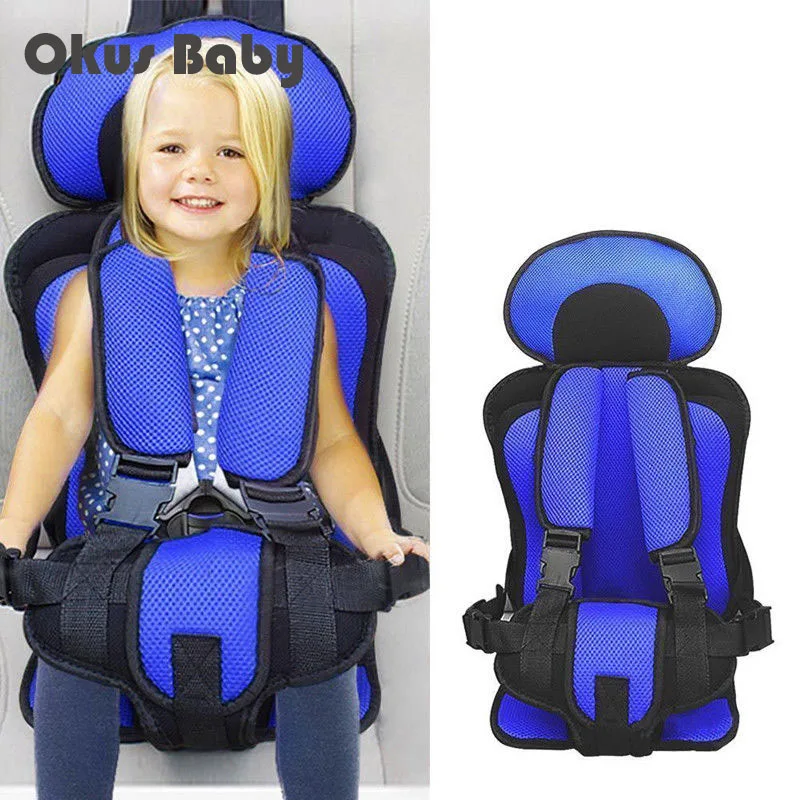 Many manufacturers allow the use of a tightly rolled small diaper or cloth between the crotch strap and your child, if necessary, to prevent slouching. Do not place padding under or behind your child or use any sort of car safety seat insert unless it came with the seat or was made by the manufacturer for use with that specific seat.
Many manufacturers allow the use of a tightly rolled small diaper or cloth between the crotch strap and your child, if necessary, to prevent slouching. Do not place padding under or behind your child or use any sort of car safety seat insert unless it came with the seat or was made by the manufacturer for use with that specific seat.
Why should I dress my child in thinner layers of clothing before strapping them into a car safety seat?
Bulky clothing, including winter coats and snowsuits, can compress in a crash and leave the straps too loose to restrain your child, leading to increased risk of injury. Ideally, dress your baby in thinner layers and wrap a coat or blanket around your baby over the buckled harness straps if needed. See Winter Car Seat Safety Tips from the AAP.
Do preemies need a special car seat?
A car safety seat should be approved for a baby's weight. Very small babies who can sit safely in a semi-reclined position usually fit better in rear-facing–only seats. Babies born preterm should be screened while still in the hospital to make sure they can sit safely in a semi-reclined position. Babies who need to lie flat during travel may be able to ride in a car bed that meets Federal Motor Vehicle Safety Standard 213. They should be screened again while in the hospital to make sure they can lie safely in the car bed.
Babies born preterm should be screened while still in the hospital to make sure they can sit safely in a semi-reclined position. Babies who need to lie flat during travel may be able to ride in a car bed that meets Federal Motor Vehicle Safety Standard 213. They should be screened again while in the hospital to make sure they can lie safely in the car bed.
Always read the vehicle owner's manual and the car safety seat manual before installing the seat.
Any child who has outgrown the rear-facing weight or height limit for her convertible seat should use a forward- facing seat with a harness for as long as possible, up to the highest weight or height allowed by her car safety seat manufacturer. It is best for children to ride in a seat with a harness as long as possible, at least to 4 years of age. If your child outgrows a seat before reaching 4 years of age, consider using a seat with a harness approved for higher weights and heights.
Types of Forward-Facing Car Seat Restraints
Four types of car safety restraints can be used forward facing:
Convertible seats: Seats can "convert" from rear facing to forward facing.
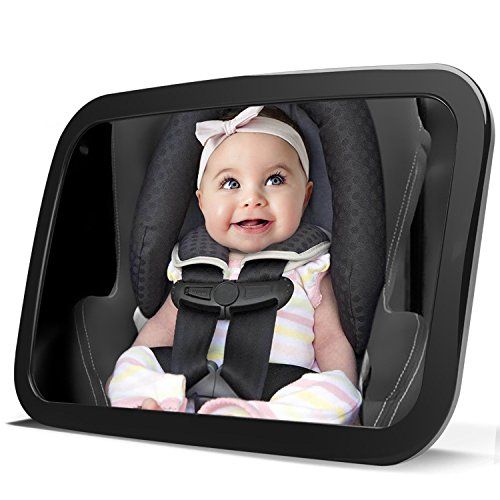 These include all-in-one seats.
These include all-in-one seats.Combination seats with harness: Seats can be used forward facing with a harness for children who weigh up to 40 to 65 pounds (depending on the model) or without the harness as a booster (up to 100–120 pounds, depending on the model).
Integrated seats: Some vehicles come with built-in forward-facing seats. Weight and height limits vary. Do not use a built-in seat until your child has reached the highest weight or height allowed for your rear-facing convertible car safety seat. Read your vehicle owner's manual for details about how to use these seats.
Travel vests: Vests can be worn by children 22 to 168 pounds and can be an option to traditional forward- facing seats. They are useful for when a vehicle has lap-only seat belts in the rear, for children with certain special needs, or for children whose weight has exceeded that allowed by car safety seats.
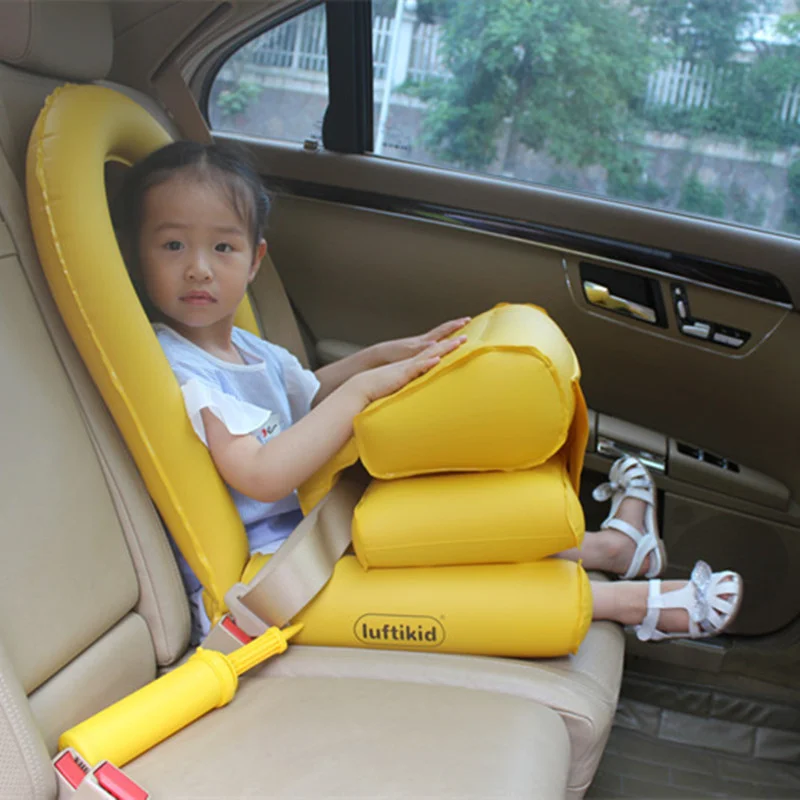 These vests usually require use of a top tether.
These vests usually require use of a top tether.
Installation tips for forward-facing seats
Always read the vehicle owner's manual and the car safety seat manual before installing the seat.
It is important that the car safety seat is installed tightly in the vehicle and that the harness fits your child snugly.
To switch a convertible or all-in-one seat from rear-facing to forward-facing:
Move the harness shoulder straps to the slots or position that is at or just above your child's shoulders. Check the instructions that came with the seat to be sure you are positioning the shoulder straps correctly.
You may have to adjust the recline angle of the seat so that it sits more upright in your vehicle. Check the instructions to be sure.
If using a seat belt, make sure it runs through the forward-facing belt path (be sure to follow car safety seat instructions) and that the seat belt is locked and tightened.
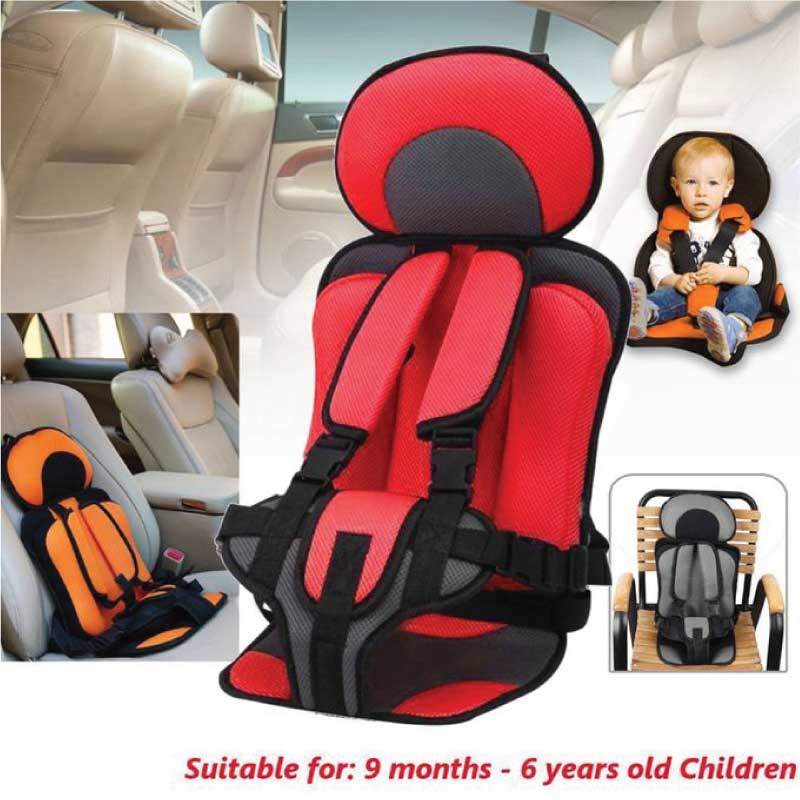 Many car safety seats have an integrated lock-off to keep the seat belt locked. If your seat has one, follow the manufacturer's recommendations on how to use it.
Many car safety seats have an integrated lock-off to keep the seat belt locked. If your seat has one, follow the manufacturer's recommendations on how to use it.If using the lower anchors, make sure that the weight of your child plus the weight of the seat does not exceed 65 pounds. Most seats now state in the manual and on the stickers on the side the maximum child weight to use the anchors. If the child weighs too much, caregivers must use the seat belt to install.
Always use the tether when you can. A tether is a strap that is attached to the top part of a car safety seat and holds the seat tightly by connecting to an anchor point in your vehicle (often on the seat back or rear shelf; see your vehicle owner's manual to find where tether anchors are in your vehicle). Tethers give important extra protection by keeping the car safety seat and your child's head from moving too far forward in a crash or sudden stop. All new cars, minivans, and light trucks are required to have tether anchors as of September 2000.
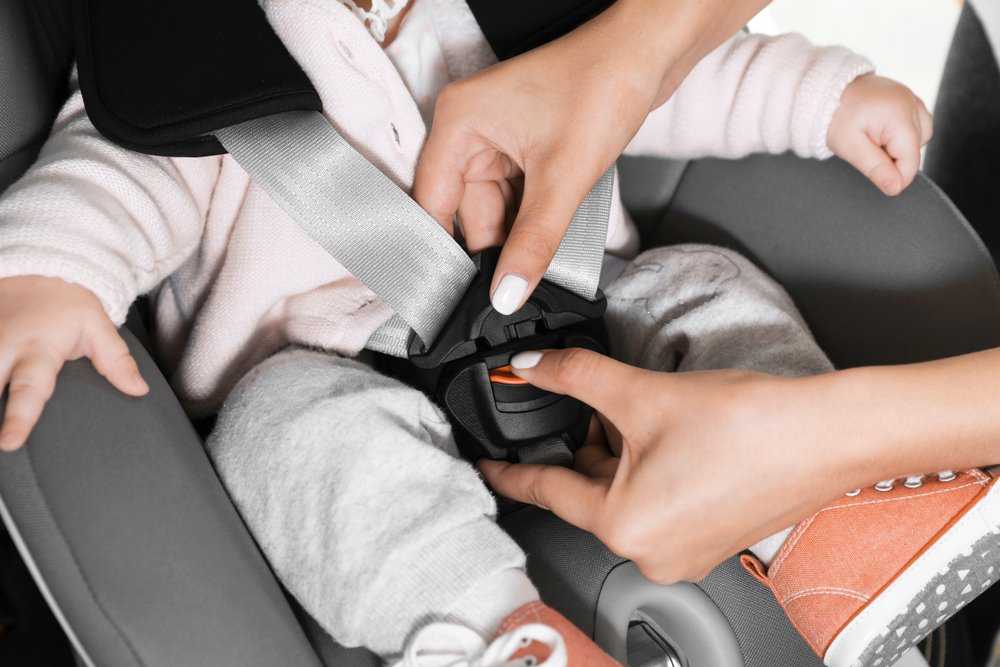 Forward-facing seats come with tether straps. A tether should always be used as long as your child has not reached the top weight limit for the tether anchor. Check the car safety seat instructions and vehicle owner's manual for information about the top weight limit and locations of tether anchors.
Forward-facing seats come with tether straps. A tether should always be used as long as your child has not reached the top weight limit for the tether anchor. Check the car safety seat instructions and vehicle owner's manual for information about the top weight limit and locations of tether anchors. Watch the Video: How to Install a Forward-Facing Car Seat
Common question
What if I drive more children than those who can be buckled safely in the back seat?
It's best to avoid this, especially if your vehicle has airbags in the front seat. All children younger than 13 years should ride in the back seat. If absolutely necessary, a child in a forward-facing seat with a harness may be the best choice to ride in front. Just be sure the vehicle seat is moved as far back away from the dashboard (and airbag) as possible.
Booster seats are for older children who have outgrown their forward-facing seats. All children whose weight or height exceeds the forward-facing limit for their car safety seat should use a belt-positioning booster seat until the vehicle seat belt fits properly, typically when they have reached 4 feet 9 inches in height and are 8 to 12 years of age. Most children will not fit in most vehicle seat belts without a booster until 10 to 12 years of age. All children younger than 13 years should ride in the back seat. Instructions that come with your car safety seat will tell you the height and weight limits for the seat. As a general guideline, a child has outgrown a forward-facing seat when any of the following situations is true:
All children whose weight or height exceeds the forward-facing limit for their car safety seat should use a belt-positioning booster seat until the vehicle seat belt fits properly, typically when they have reached 4 feet 9 inches in height and are 8 to 12 years of age. Most children will not fit in most vehicle seat belts without a booster until 10 to 12 years of age. All children younger than 13 years should ride in the back seat. Instructions that come with your car safety seat will tell you the height and weight limits for the seat. As a general guideline, a child has outgrown a forward-facing seat when any of the following situations is true:
They reach the top weight or height allowed for his seat with a harness. (These limits are listed on the seat and in the instruction manual.)
Their shoulders are above the top harness slots.
The tops of their ears have reached the top of the seat.
Types of booster seats
High-back and backless are 2 standard types of booster seats. They do not come with a harness but are used with lap and shoulder seat belts in your vehicle, the same way an adult rides. They are designed to raise a child up so that lap and shoulder seat belts fit properly over the strongest parts of the child's body.
They do not come with a harness but are used with lap and shoulder seat belts in your vehicle, the same way an adult rides. They are designed to raise a child up so that lap and shoulder seat belts fit properly over the strongest parts of the child's body.
Most booster seats are not secured to the vehicle seat with the seat belt or lower anchors and tether but simply rest on the vehicle seat and are held in place once the seat belt is fastened over a child. However, some models of booster seats can be secured to the vehicle seat and kept in place by using the lower anchors and tether along with lap and shoulder belts. (Currently, only a few vehicle manufacturers offer integrated booster seats.)
Installation tips for booster seats
When using a booster seat, always read the vehicle owner's manual and the car safety seat manual before installing the seat. Booster seats often have a plastic clip or guide to correctly position vehicle lap and shoulder belts. See the booster seat instruction manual for directions on how to use the clip or guide.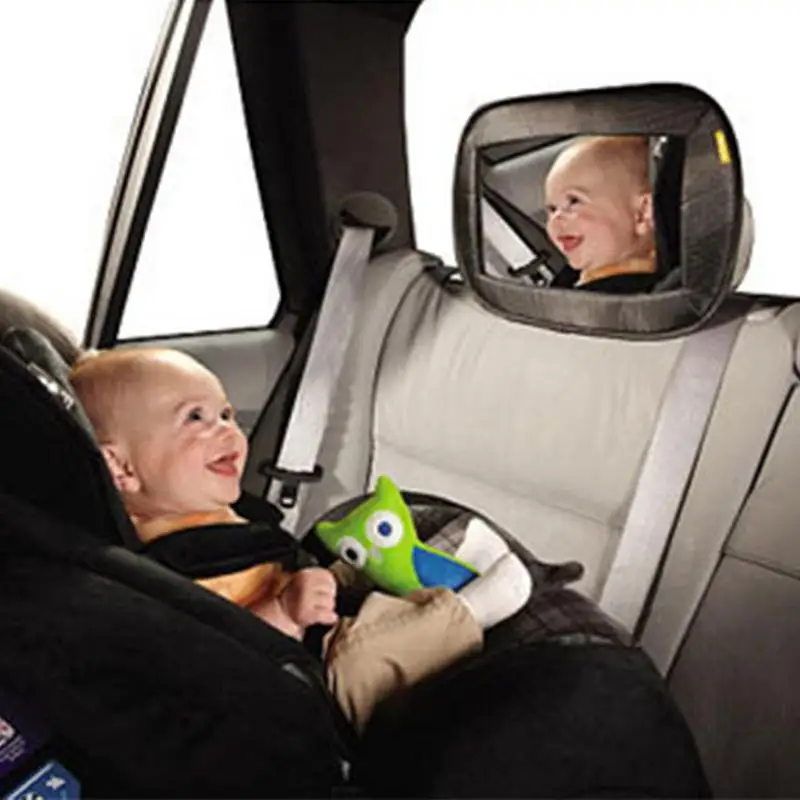 Booster seats must be used with lap and shoulder belts. When using a booster seat, make sure:
Booster seats must be used with lap and shoulder belts. When using a booster seat, make sure:
The lap belt lies low and snug across your child's upper thighs.
The shoulder belt crosses the middle of your child's chest and shoulder and is off the neck.
Watch the video: How to Use a Booster Seat
If your booster seat has lower anchors or tether attachments, check its manual for installation instructions.
Common questions about booster seats
What if my car has only lap belts in the back seat?
Lap belts work fine with rear-facing–only, convertible, and forward-facing seats that h av e a harness but can never be used with a booster seat. If your car has only lap belts, use a forward-facing seat that has a harness and higher weight limits. You could also
Check to see if shoulder belts can be installed in your vehicle.
Use a travel vest (check the manufacturer's instructions about the use of lap belts only and about the use of lap and shoulder belts).
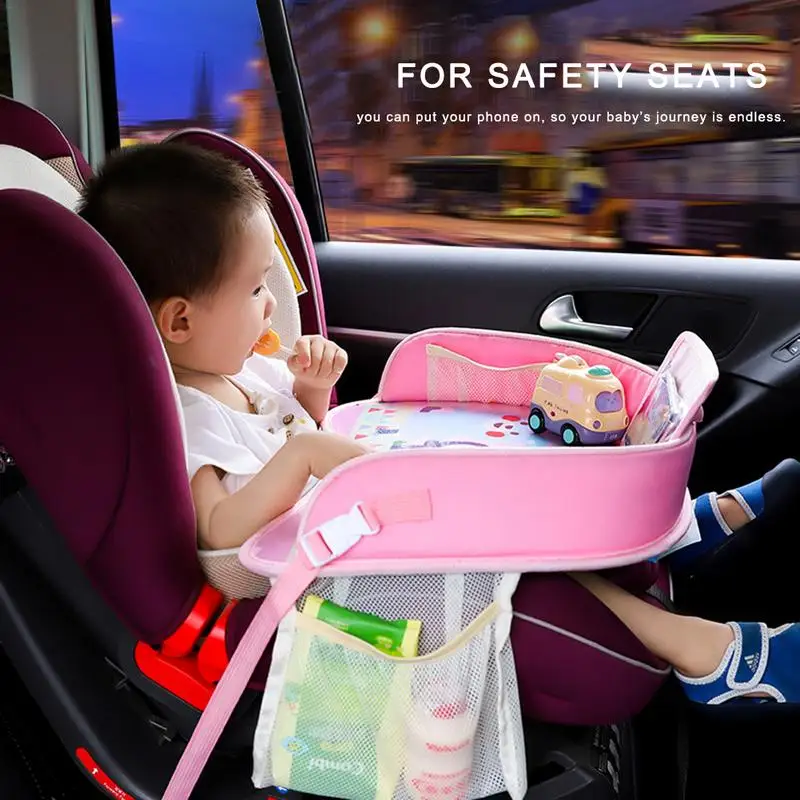
Consider buying another car with lap and shoulder belts in the back seat.
What is the difference between high-back boosters and backless boosters?
Both types of boosters are designed to raise your child so seat belts fit properly, and both will reduce your child's risk of injury in a crash. High-back boosters should be used in vehicles without headrests or with low seat backs. Many seats that look like high-back boosters are actually combination seats. They come with harnesses that can be used for smaller children and, later, removed for older children. Backless boosters are usually less expensive and are easier to move from one vehicle to another. Backless boosters can be used safely in vehicles with headrests and high seat backs.
Seat belts are made for adults. Children should stay in a booster seat until adult seat belts fit correctly, typically when children reach about 4 feet 9 inches in height and are 8 to 12 years of age.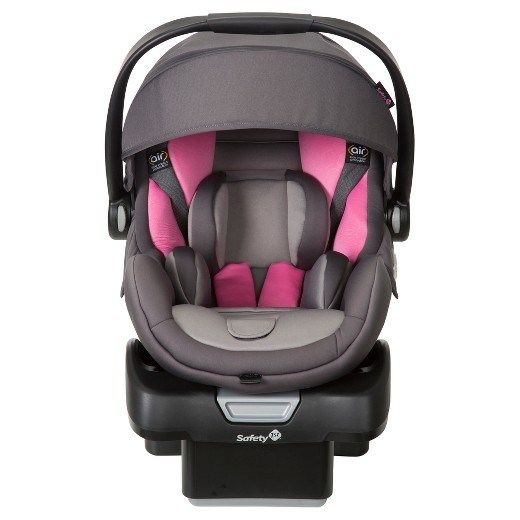 Most children will not fit in a seat belt alone until 10 to 12 years of age. When children are old enough and large enough to use the vehicle seat belt alone, they should always use lap and shoulder seat belts for the best protection. All children younger than 13 years should ride in the back seat.
Most children will not fit in a seat belt alone until 10 to 12 years of age. When children are old enough and large enough to use the vehicle seat belt alone, they should always use lap and shoulder seat belts for the best protection. All children younger than 13 years should ride in the back seat.
Using a seat belt:
An adult seat belt fits correctly when:
The shoulder belt lies across the middle of the chest and shoulder, not the neck or throat.
The lap belt is low and snug across the upper thighs, not the belly.
Your child is tall enough to sit against the vehicle seat back with her knees bent over the edge of the seat without slouching and can comfortably stay in this position throughout the trip.
Other points to keep in mind when using seat belts include:
Make sure your child does not tuck the shoulder belt under her arm or behind her back. This leaves the upper body unprotected and adds extra slack to the seat belt system, putting your child at risk of severe injury in a crash or with sudden braking.
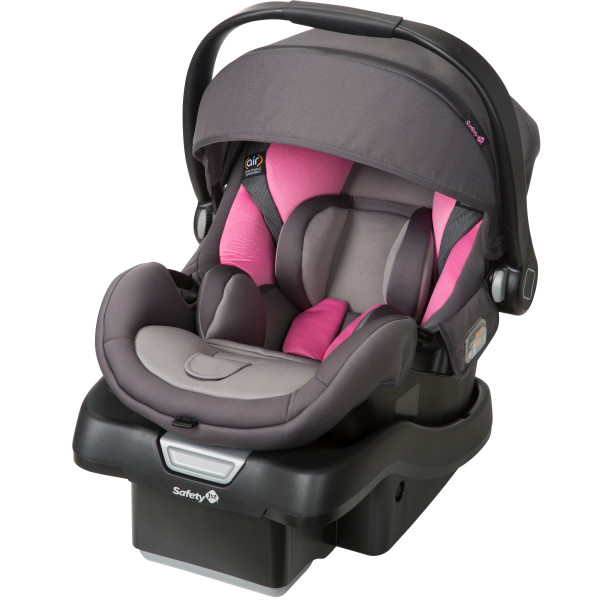
Never allow anyone to "share" seat belts. All passengers must have their own car safety seats or seat belts.
Common question
I've seen products that say they can help make the seat belt fit better. Should we get one of these?
No, these products are unapproved and should not be used. They may actually interfere with proper seat belt fit by causing the lap belt to ride too high on the stomach or making the shoulder belt too loose. They can even damage the seat belt. This rule applies to car safety seats too; do not use extra products unless they came with the seat or are specifically approved by the seat manufacturer. These products are not covered by any federal safety standards, and the AAP does not recommend they be used. As long as children are riding in the correct restraint for their size, they should not need to use additional devices.
When shopping for a car seat, keep the following tips in mind:
No one seat is the "best" or "safest.
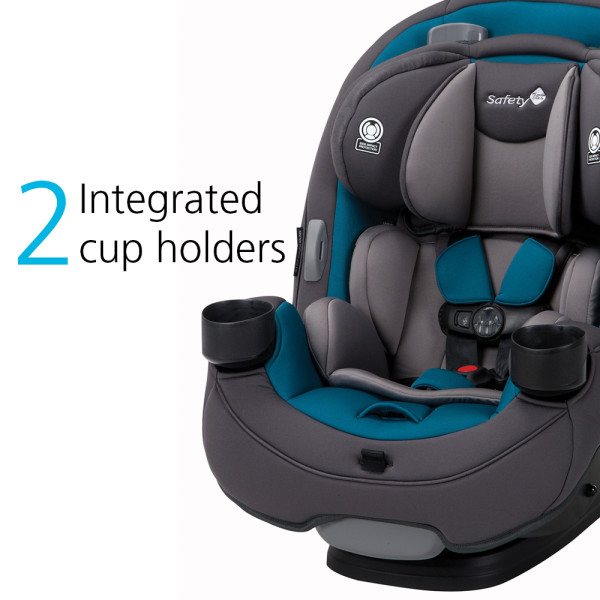 " The best seat is the one that fits your child's size, is correctly installed, fits well in your vehicle, and is used properly every time you drive.
" The best seat is the one that fits your child's size, is correctly installed, fits well in your vehicle, and is used properly every time you drive.Don't decide by price alone. A higher price does not mean the seat is safer or easier to use.
Avoid used seats if you don't know the seat's history.
Watch the Video: What to Look For When Purchasing a Car Seat
Never use a car seat that:
Is too old. Look on the label for the date the seat was made. Check with the manufacturer to find out how long it recommends using the seat.
Has any visible cracks on it.
Does not have a label with the date of manufacture and model number. Without these, you cannot check to see if the seat has been recalled.
Does not come with instructions.
.jpg) You need them to know how to use the seat. Instructions can be found on manufacturer websites or by contacting the manufacturer.
You need them to know how to use the seat. Instructions can be found on manufacturer websites or by contacting the manufacturer.Is missing parts. Used car safety seats often come without important parts. Check with the manufacturer to make sure you can get the right parts.
Was recalled. You can find out by calling the manufacturer or contacting the National Highway Traffic Safety Administration (NHTSA) Vehicle Safety Hotline at 888/327-4236. You can also visit the NHTSA Website.
Do not use seats that have been in a moderate or severe crash. Seats that were in a minor crash may still be safe to use, but some car safety seat manufacturers recommend replacing the seat after any crash, even a minor one. The NHTSA considers a crash minor if all the following situations are true:
The vehicle could be driven away from the crash.
The vehicle door closest to the car safety seat was not damaged.
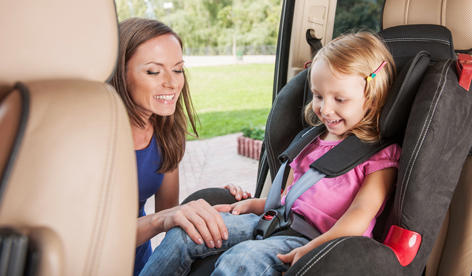
No one in the vehicle was injured.
The airbags did not go off.
You can't see any damage to the car safety seat.
If you have specific questions about the car seat, contact the manufacturer.
Front airbags are installed in all new cars. When used with seat belts, airbags work well to protect teenagers and adults; however, airbags can be very dangerous to children, particularly to those riding in rear-facing seats and to preschoolers and young school-aged children who are not properly restrained. If your vehicle has a front passenger airbag, infants in rear-facing seats must ride in the back seat. Even in a relatively low-speed crash, the airbag can inflate, strike the car safety seat, and cause serious brain injury and death.
Vehicles with no back seat or a back seat that is not made for passengers are not the best choice for traveling with small children; however, the airbag can be turned off in some of these vehicles if the front seat is needed for a child passenger.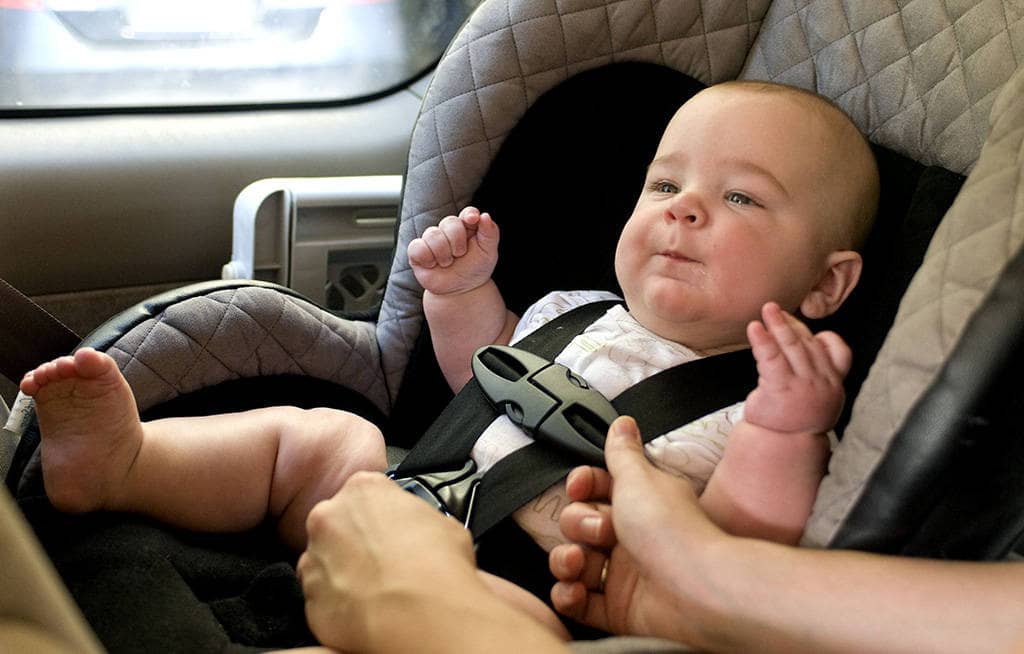 See your vehicle owner's manual for more information.
See your vehicle owner's manual for more information.
Side airbags are available in most new cars. Side airbags improve safety for adults in side-impact crashes. Read your vehicle owner's manual for more information about the airbags in your vehicle. Read your car safety seat instructions and the vehicle owner's manual for guidance on placing the seat next to a side airbag.
About carpooling
If your child is being driven by someone else, make sure:
The car safety seat your child will be using fits properly in the vehicle used for transport.
The car safety seat being used is appropriate for the age and size of your child.
The person in charge of transporting your child knows how to install and use the car safety seat correctly.
Child care programs and schools should have written guidelines for transporting children, including
All drivers must have a valid driver's license.
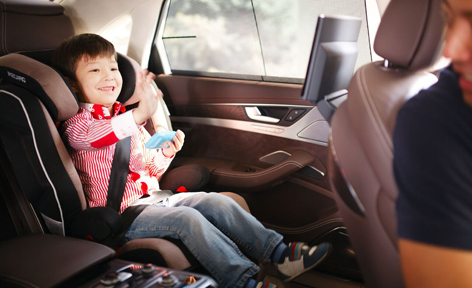 In some states, school bus drivers need to have a special type of license.
In some states, school bus drivers need to have a special type of license.Staff to child ratios for transport should meet or exceed those required for the classroom.
Every child should be supervised during transport, either by school staff or a parent volunteer, so the driver can focus on driving.
School staff, teachers, and drivers should know what to do in an emergency, know how to properly use car safety seats and seat belts, and be aware of other safety requirements.
About car safety seats on airplanes
The Federal Aviation Administration (FAA) and the AAP recommend that children less than 40 pounds be securely fastened in certified child restraints when flying. This will help keep them safe during takeoff and landing or in case of turbulence. Most rear-facing, convertible, and forward-facing seats can be used on airplanes , but booster seats and travel vests cannot.
Read your seat's instruction manual and look for a label on the car safety seat that says, "This restraint is certified for use in motor vehicles and aircraft.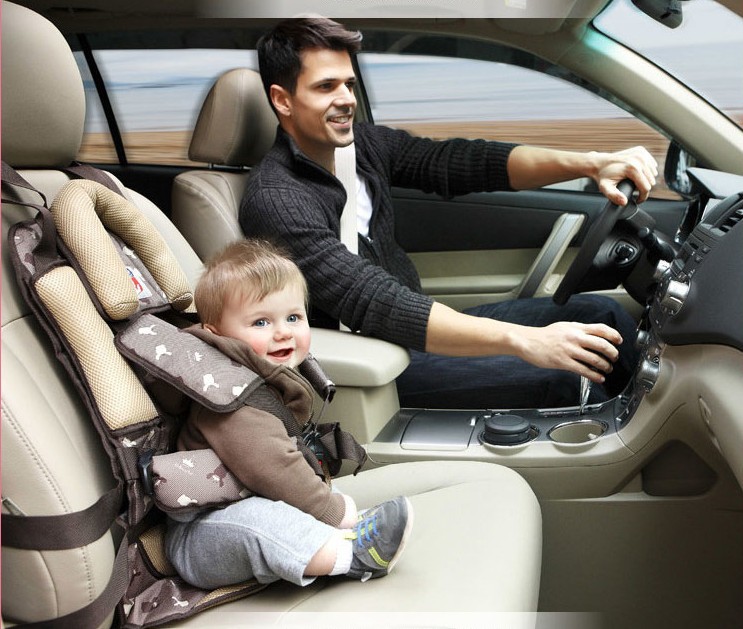 " You can also consider using a restraint made only for use on airplanes and approved by the FAA. Larger children may use the airplane seat belt or continue to use their car safety seat on the airplane as long as it is labeled for use on aircraft and the child has not exceeded the seat's weight or height limit. Remember that your child will need an appropriate car safety seat to use at your destination. For more information, visit the
FAA Website or the
CARES (Airplane Safety Harness for Children) Website.
" You can also consider using a restraint made only for use on airplanes and approved by the FAA. Larger children may use the airplane seat belt or continue to use their car safety seat on the airplane as long as it is labeled for use on aircraft and the child has not exceeded the seat's weight or height limit. Remember that your child will need an appropriate car safety seat to use at your destination. For more information, visit the
FAA Website or the
CARES (Airplane Safety Harness for Children) Website.
If you need installation help
If you have questions or need help with installing your car safety seat, find a certified child passenger safety technician (CPST or CPS technician). Lists of certified CPSTs and child seat–fitting stations are available on the following websites:
National Child Passenger Safety Certification (Click on "Find a Tech" or call 877-366-8154.) – Includes list of CPSTs fluent in Spanish and other languages or with extra training in transportation of children with special needs.
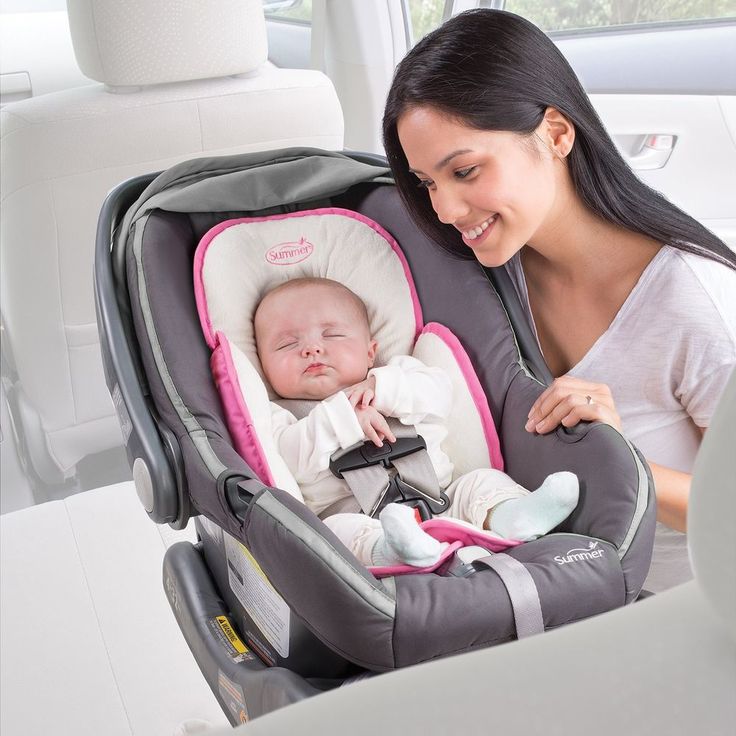
NHTSA Parents & Caregivers
Important reminders
Be a good role model. Make sure you always wear your seat belt. This will help your child form a lifelong habit of buckling up.
Make sure that everyone who transports your child uses the correct car safety seat or seat belt on every trip, every time. Being consistent with car safety seat use is good parenting, reduces fussing and complaints, and is safest for your child.
Never leave your child alone in or around cars, and lock your vehicle when it is not in use. Any of the following situations can happen when a child is left alone in or around a vehicle. A child can
Die of heatstroke because temperatures can reach deadly levels in minutes.
Be strangled by power windows, retracting seat belts, sunroofs, or accessories.
Knock the vehicle into gear, setting it into motion.

Be backed over when the vehicle backs up.
Become trapped in the trunk of the vehicle.
Always read and follow the manufacturer's instructions for your car safety seat. If you do not have those, write or call the company's customer service department. Staff will ask you for the model number, name of seat, and date of manufacture. The manufacturer's address and phone number are on a label on the seat. Also, be sure to follow the instructions in your vehicle owner's manual about using car safety seats. Some manufacturers' instructions may be available on their websites.
Remember to fill out and mail in the registration card that comes with the car safety seat. You can also register your seat on the manufacturer's website. It will be important in case the seat is recalled.
Follow manufacturer directions for cleaning car seats. Cleaning but not disinfecting is usually permitted.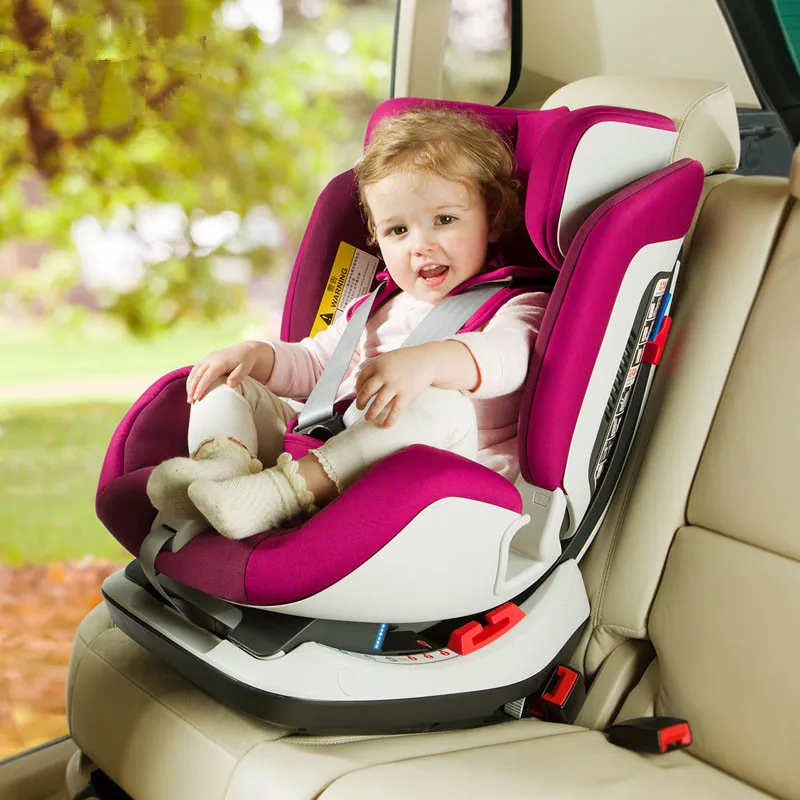 That's because disinfectant products may decrease the protection provided by the seat and harness.
That's because disinfectant products may decrease the protection provided by the seat and harness.
More information
-
Ask the Pediatrician: Is it safe for my baby to travel in a car seat a few hours at a time?
- Car Seats: Product Listing
- Car Seat Checkup
- Car Seats and Obese Children: Suggestions for Parents
- Prevent Child Deaths in Hot Cars
- Travel Safety During COVID-1 9
Although the AAP is not a testing or standard-setting organization, this article sets forth the AAP recommendations based on the peer-reviewed literature available at the time of its publication and sets forth some of the factors that parents should consider before selecting and using a car seat.
Figure 1 adapted from US Department of Transportation, National Highway Traffic Safety Administration (NHTSA). LATCH Makes Child Safety Seat Installation as Easy as 1-2-3.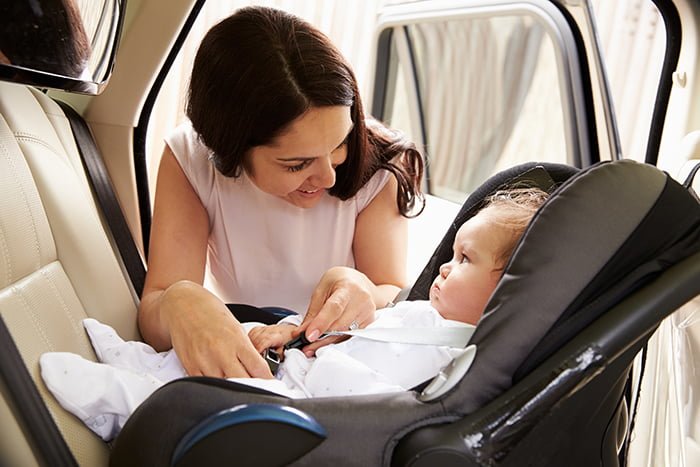 Washington, DC: NHTSA; 2011. DOT HS publication 809 489.
Washington, DC: NHTSA; 2011. DOT HS publication 809 489.
Figure 4 from Bull MJ, Engle WA; American Academy of Pediatrics Committee on Injury, Violence, and Poison Prevention and Committee on Fetus and Newborn. Safe transportation of preterm and low birth weight infants at hospital discharge. Pediatrics. 2009;123(5):1424–1429.
The information contained on this Web site should not be used as a substitute for the medical care and advice of your pediatrician. There may be variations in treatment that your pediatrician may recommend based on individual facts and circumstances.
Child safety rules in the car
Skip to content Rules for the safety of children in the car- View Larger Image
It seems that all parents know perfectly well what it means to travel safely with children, but for some reason they often make dangerous compromises.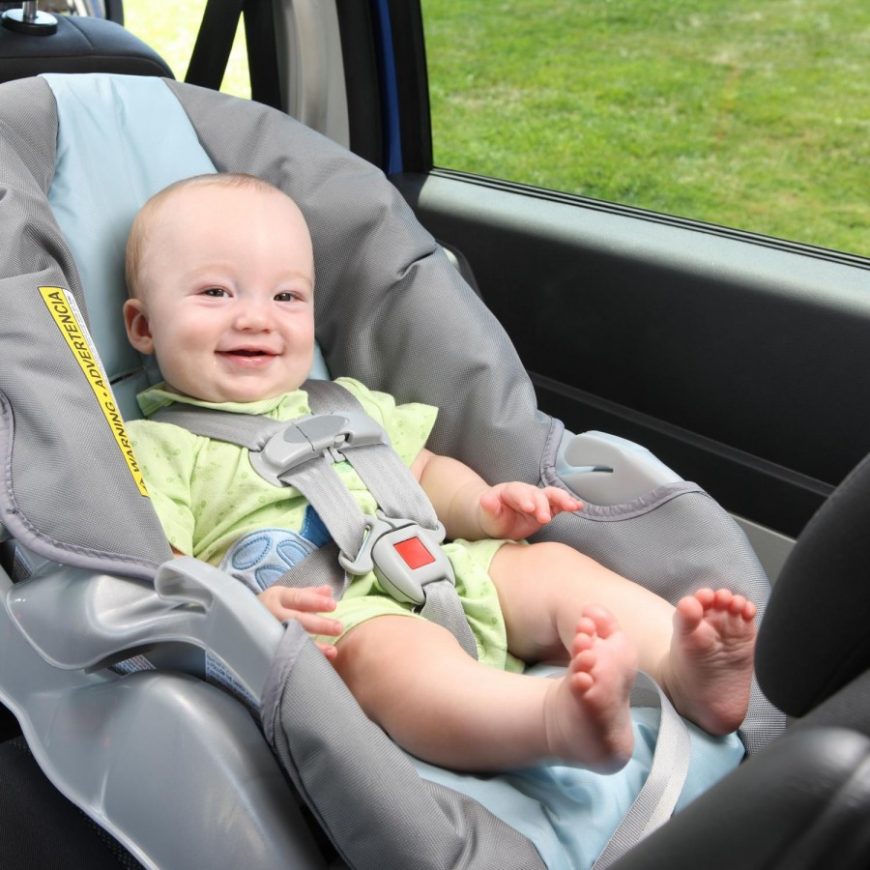 When driving in a car, for example, for short distances, they allow themselves not to fasten the child. And when they go long distances, they can, for example, arrange a child's bed in the trunk of a large car or in the back seat of any other car - and again the child is not fastened with seat belts. Or, as I often see, they can put you in front of you on your lap in the front seat. We are all adult experienced people, we all love our children and do not want them to feel bad. Moreover, we all, of course, drive our cars perfectly and do not expect any incidents on the road. And yet, according to the traffic police, for 8 months of 2015 in Russia, 14,300 people died in road accidents, and 146,200 people were injured. 8,507 road accidents occurred with the participation of children. They were wounded - 8990 children died - 305 children. Therefore, I propose to forget about your driving skills and the skills of all road users, and remember, remember and swear to yourself to unconditionally follow the rules that are responsible for the life and health of your child.
When driving in a car, for example, for short distances, they allow themselves not to fasten the child. And when they go long distances, they can, for example, arrange a child's bed in the trunk of a large car or in the back seat of any other car - and again the child is not fastened with seat belts. Or, as I often see, they can put you in front of you on your lap in the front seat. We are all adult experienced people, we all love our children and do not want them to feel bad. Moreover, we all, of course, drive our cars perfectly and do not expect any incidents on the road. And yet, according to the traffic police, for 8 months of 2015 in Russia, 14,300 people died in road accidents, and 146,200 people were injured. 8,507 road accidents occurred with the participation of children. They were wounded - 8990 children died - 305 children. Therefore, I propose to forget about your driving skills and the skills of all road users, and remember, remember and swear to yourself to unconditionally follow the rules that are responsible for the life and health of your child.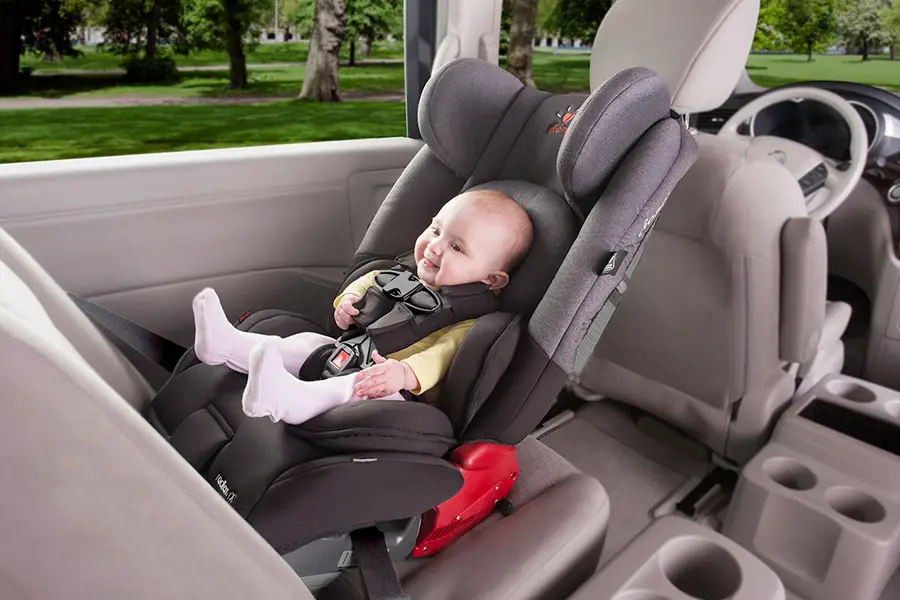
Carry your child in a restraint only. The chair is selected according not to the age, but to the dimensions of the child – height and weight are taken into account. An armchair for babies (in the first years of life) must be with internal belts. Any child seat must be certified and have documents on passing crash tests. Of course, the child should be comfortable in it. Remember that while the child is small, the muscles of the neck and head are weak. You need to choose a chair with good neck and head protection. When buying a chair, be sure to ask a specialist to adjust it before you start using it yourself.
Place your child in a booster seat or on a regular seat when his height has reached 150 cm. If the child has grown up and is already protected in the booster, that is, car head restraints are already working normally to protect the child’s head and neck, and regular seat belts do not pass through the child’s neck, but over the shoulder, then you can land out of the restraint (chair). If you put a child in a booster, then raise your ass higher so that regular car head restraints perform their protective function for the child’s head and neck. This is also important because the head protection zones in case of a side impact are designed in cars exactly at the level of the head restraints and at a lower level the risk of injury is much higher. In addition, in child seats, as a rule, there is a system for protecting the head and neck from lateral overloads, which is not in either boosters or regular seats, so the use of a child seat is most preferable.
If you put a child in a booster, then raise your ass higher so that regular car head restraints perform their protective function for the child’s head and neck. This is also important because the head protection zones in case of a side impact are designed in cars exactly at the level of the head restraints and at a lower level the risk of injury is much higher. In addition, in child seats, as a rule, there is a system for protecting the head and neck from lateral overloads, which is not in either boosters or regular seats, so the use of a child seat is most preferable.
Install the child seat within sight of the parent. The safest places are the rear seats. My recommendation is to put the seat in the back on the right so that the parent who is driving can see the child. Many, I know, prefer to install a chair in the middle of the rear seats. I do not recommend it - firstly, there is no isofix in the middle, and secondly, during sudden braking, everything that is in the hands of a child can fly into adults sitting in front. In accordance with the traffic rules (clause 22.9), you can transport children under 12 years old in the front seat only in the restraint. And the small passenger's airbag must be turned off. You can leave the pillow on when the child reaches 140 cm.
In accordance with the traffic rules (clause 22.9), you can transport children under 12 years old in the front seat only in the restraint. And the small passenger's airbag must be turned off. You can leave the pillow on when the child reaches 140 cm.
Do not carry children on your lap. Yes, this also applies to newborns. In a collision, no adult will be able to hold a child in his arms. What will happen? There will be everything - from injury to death. How and why - watch the crash test video.
Carry babies up to 13 kg only in a group 0+ car seat. These are rear facing seats. The key words here are “against the direction of travel”. Because in children under 5 years old, the neck has not yet grown stronger, and the head relative to the body is large and heavy. In a frontal impact, the head moves forward by inertia, and there is a high probability of injuring the neck. When the child is seated against the direction of travel, the load during a frontal impact is distributed evenly.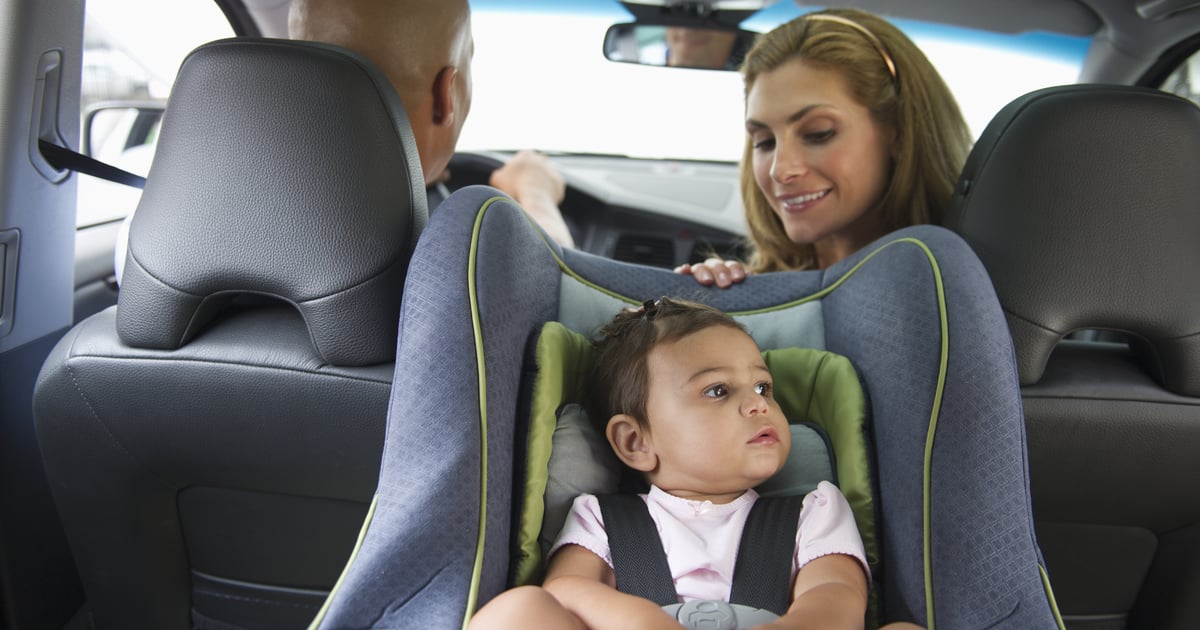
Replace restraints and seat belts after an accident. After an accident, chairs and belts do not have the necessary strength due to overloads on all components. Therefore, do not be lazy - buy a new chair.
Use child mode for doors and windows. Make sure that the rear windows do not open all the way so that the child does not pinch his hands. A small child should not be able to open the door, glass, stick out his hands, and so on. Well, of course, talk to your child - explain the rules of behavior in the car.
Do not leave your child alone in the car, even for a short time! In addition to the fact that the child in your absence is unattended, and can independently provoke a dangerous situation for him and those around him, no one is immune from the fact that your absence will be longer than planned, and the child will begin to suffer from heat, cold, thirst and other striking factors. In addition, an abandoned car with a child inside may be evacuated or become a participant in any incident, which may adversely affect the psychophysical state of the child.
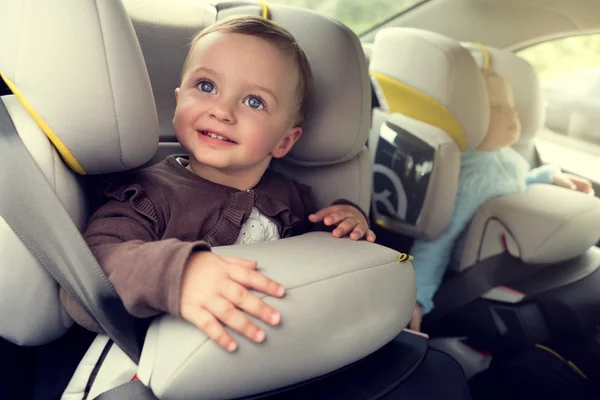 Many seats can accommodate children up to 65 pounds or more.
Many seats can accommodate children up to 65 pounds or more.
